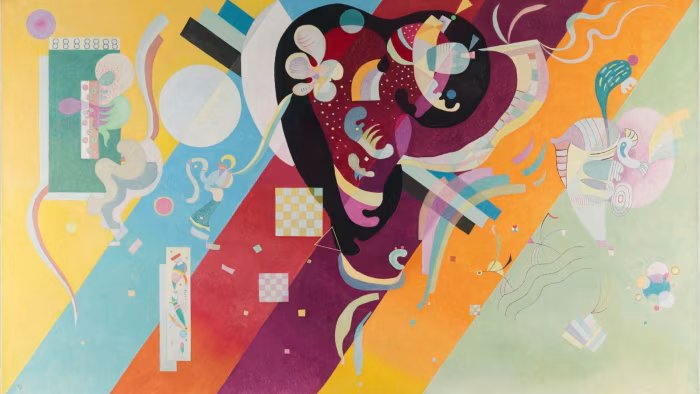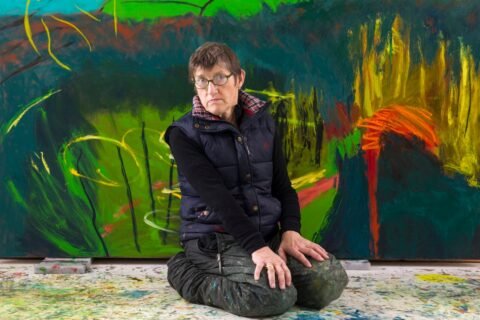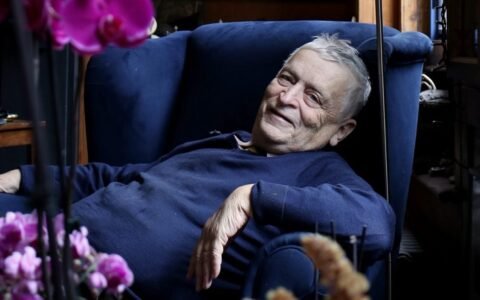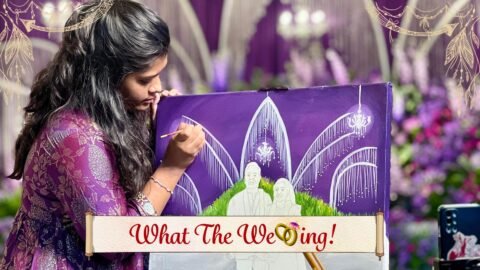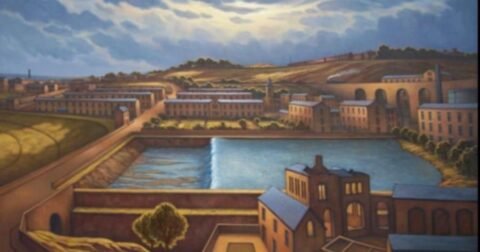A green horse, a red sky, a forest of blue trees. Born of the same century that gave us Marcel Duchamp’s urinal and Tracey Emin’s unmade bed, it seems quaint to think much of this little subversion of colour. And yet, when Russian artist Wassily Kandinsky painted “Improvisation 3” in 1909, it marked a revolutionary moment in art history. No longer would the representation of reality dominate; now, form, lines and above all colour would be employed to describe our inner emotions. Kandinsky pioneered abstract painting that would shape modern art, but how did he do it? In a word: music.
That artists of all kinds are inspired by their forebears is both logical and commonplace. Less obvious are the inspirations that cross disciplines. In 1896, Kandinsky went to the Bolshoi Theatre in Moscow, the city where he was born, to hear the opera Lohengrin by Richard Wagner, and his life was never the same. “I saw all my colours in my mind; they stood before my eyes,” Kandinsky wrote of the experience in his 1911 book, Concerning the Spiritual in Art. “Wild, almost crazy lines were sketched in front of me. I did not dare use the expression that Wagner had painted ‘my hour’ musically.”
Kandinsky had wanted to break with form in his art, only he had been unsure how to do it. Now, he began to see a connection between music and colour, and from that moment on, Kandinsky, a trained lawyer until he fully turned to painting at age 30, would begin to move away from the figurative painting of his early work.
Kandinsky: The Music of Colours, a major collaboration between the Centre Pompidou and the Philharmonie de Paris, explores this intimate dialogue between music and Kandinsky’s canvases, and in doing so, traces the birth of abstract art itself. Upon entering the show at the Philharmonie, visitors are handed headphones, immersing them in a soundscape that accompanies their journey through the exhibition. Each room marks a chapter in Kandinsky’s evolution towards abstraction, pairing pivotal paintings with a piece of music thought to have inspired their creation.
In one of the first rooms — titled “Improvisations” — devoted to Kandinsky’s early experiments in freeing colour, we hear the music of Arnold Schoenberg. His Trois pièces pour piano, one of Schoenberg’s first atonal works, introduces a composer who would become one of Kandinsky’s most important artistic influences. Kandinsky described Schoenberg as being “almost alone in severing himself from conventional beauty . . . Today’s dissonance in painting and music is merely the consonance of tomorrow.” This insight — that music, and by extension painting, need not conform to traditional notions of beauty but could instead be expressive, radical and new — became a cornerstone of Kandinsky’s vision, mirroring his own search to liberate colour from representation.
From there, the path leads to rooms including “The Apocalypse as a Total Work of Art”, where we hear Alexander Scriabin’s Poem of Ecstasy, a hymn to the creative spirit’s awakening to divine consciousness, and see works including Kandinsky’s “Etude for Composition VII” (1913) and “Toussaint” (1910). Later, in the room devoted to his theatrical experiments, in which Kandinsky attempted to give abstraction a stage, it is Modest Mussorgsky’s Pictures at an Exhibition that accompanies us round. The music recalls Kandinsky’s own ventures into scenography, his dream of a “total artwork” in which sound, colour, and movement might finally merge.

“For Kandinsky, music was a way to understand abstract art. It encouraged him to go beyond figurative art,” says Angela Lampe, a curator of the exhibition. “Music was a model for art and an analogy.”
Why does it matter that this exhibition draws music into the frame? Because it reminds us that comparison is more than a critical exercise: it’s a creative one, too. While we like to sort the arts into neat, self-contained categories — painting, music, poetry, photography — they are not as isolated as we often assume. These divisions are convenient, even necessary, for understanding the particularities of each form, but they can also mislead us. By understanding each art form through difference, we risk forgetting how profoundly interconnected they are; one medium can echo, translate, or even complete another.


To see painting beside music, as this exhibition insists we do, is to grasp what they share: rhythm, tone, structure, emotion, abstraction. Each art form has its own language, but those languages are mutually intelligible. Kandinsky understood this. For him, colour could sound, and sound could take form.
Kandinsky often described seeing colours when he heard tones, linking specific timbres to particular hues: the trumpet was yellow, the tuba red, the mid-range violin green. Whether he truly had synaesthesia in the clinical sense is uncertain — historians base the idea on his autobiographical writings, not a scientific diagnosis — but his accounts suggest that sound and colour were intimately bound. One of this exhibition’s greatest triumphs is how it lets visitors experience this for themselves. As Lampe explains: “The soundtrack to the exhibition is an interpretation. We have his record collection as hints and some quotes and texts, but we know he never painted music directly. There’s a quote from 1913 where Kandinsky said as much: ‘I don’t paint music.’”
The room “Fugue” brings this dialogue between music and painting to life. Kandinsky’s works hang alongside those of contemporaries, including Auguste Macke’s “Coloured Composition (Homage to Johann Sebastian Bach)” (1912), where the fugue form becomes visible in the way blocks of colour repeat, overlap and interact. More striking still is Paul Klee’s “Fugue in Red” (1921). This features multiple distinct shapes, their shared orientation and movement across the canvas creating the impression of a unified, flowing musical line, echoing the six-voice structure of Bach’s The Musical Offering, orchestrated by Anton Webern, heard through the headphones. This room demonstrates how Kandinsky’s ideas were part of a broader artistic conversation; he was not working in isolation, but in constant dialogue with peers who were also exploring abstraction and the interplay of form, colour and rhythm. Throughout his career, Kandinsky drew directly on musical language to title his works: Improvisations, Compositions, Impressions, even Lied, the German word for “song”.

All the milestones the exhibition traces — The Blue Rider Almanac (1912) which united artists and composers around spiritual abstraction; the Bauhaus years (1922-3), where he formalised a visual grammar of abstraction — build towards the final room. “Compositions” features three of Kandinsky’s important late works: “Composition VIII” (1923), “Composition IX” (1936) and “Composition X” (1939). With their biomorphic forms and vibrant colours, these paintings achieve autonomous, musical intensity, confirming that the artist had succeeded in ushering the medium into a new, modern era.
By foregrounding the influence of music on Kandinsky’s art, the exhibition reveals how ideas and movements often flourish through dialogue across disciplines and perspectives. It’s a poignant idea in our fractured world, an aspirational model for navigating uncertainty and, perhaps, bringing about new ways of thinking. Progress of all kinds, Kandinsky’s work shows us, depends on those not only with a vision wide enough to see what’s on the horizon, but also the imagination to dream up what might lie beyond it.
To February 1, philharmoniedeparis.fr
Find out about our latest stories first — follow FT Weekend on Instagram, Bluesky and X, and sign up to receive the FT Weekend newsletter every Saturday morning

